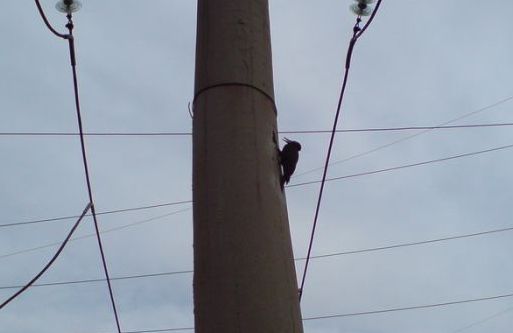|
|
Strong Woodpecker
|
General characteristics
The smallest woodpecker is the Bar-breasted Piculet, at 7 g and 8 cm (3¼ inches). The largest woodpecker was the Imperial Woodpecker, at an average of 58 cm (23 inches) and probably over 600 g (1.3 lb). The Ivory-billed Woodpecker is (or was) slightly smaller at 50 cm (20 inches) and a weight of 500 g (1.1 lb). If both the Ivory-billed and Imperial Woodpeckers are indeed extinct, the largest extant woodpecker is the Great Slaty Woodpecker of Southeast Asia, at about 50 cm (20 inches) and 450 g (1 lb). A number of species exhibit sexual dimorphism in size, bill length and weight. In the piculets it is often the females that are larger, while amongst the woodpeckers that show sexual dimorphism it is usually the males that are larger.
Most species possess predominantly white, black, brown, green, and red plumage, although many piculets show a certain amount of grey and olive green. In woodpeckers, many species exhibit patches of red and yellow on their heads and bellies, and these bright areas are important in signaling. The dark areas of plumage are often iridescent. Although the sexes of Picidae species tend to look alike, many woodpecker species have more prominent red or yellow head markings in males than in females.
Members of the family Picidae have strong bills for drilling and drumming on trees and long sticky tongues for extracting food. Woodpecker bills are typically longer, sharper and stronger than the bills of piculets and wrynecks; however their morphology is very similar. The bill's chisel-like tip is kept sharp by the pecking action in birds that regularly use it on wood. Species of woodpecker and flicker that use their bills in soil or for probing as opposed to regular hammering tend to have longer and more decurved bills. Due to their smaller bill size, many piculets and wrynecks will forage in decaying wood more often than woodpeckers. The long sticky tongues, which possess bristles, aid these birds in grabbing and extracting insects deep within a hole of a tree. It had been reported that the tongue was used to spear grubs, but more detailed studies published in 2004 have shown that the tongue instead wraps around the prey before being pulled out.
|
|









